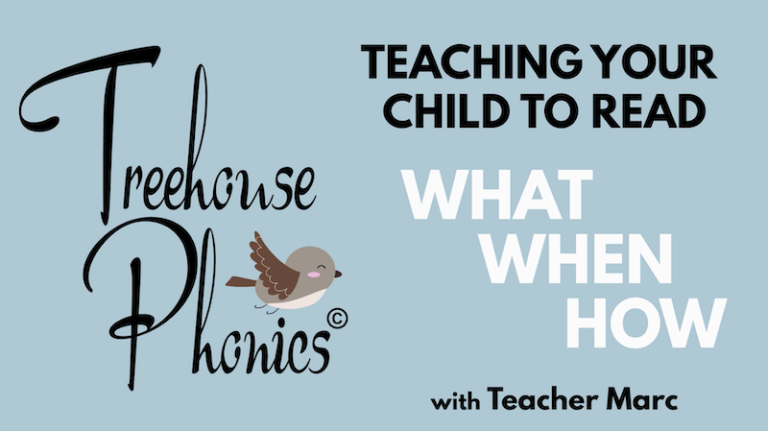Choosing a homeschool curriculum can be overwhelming, but having a checklist can help you narrow down your options and make an informed decision. Here are some key things to consider when choosing a homeschool curriculum.
Educational philosophy
You will need to factor in your own educational philosophy and what you want your child to learn. Do you want a traditional approach or a more hands-on, experiential learning approach?
Envision the “perfect” teacher. How do they look, speak, act, and care for your child? Picture the “perfect” lesson. What is happening in that lesson? How is your child responding to that lesson? How is that teacher adjusting their methods to meet your child’s specific style of learning? The manner in which they collect and process new information and concepts. Paint a VERY detailed image of that teacher in your mind. Reality check. No one will ever measure up to that. The purpose of creating the “perfect” teacher in your mind is that it sets a standard. No one is perfect at anything and no one reaches the summit of that mountain but, the higher you climb, the more effective you become.
The goal isn’t perfection; it’s keeping the standards high. It’s about YOUR potential and the best that YOU can do. Ask yourself at the end of each lesson; What went right? What did not go according to plan? How can I improve my methods? This is in no way meant to be an exercise in self-doubt. It’s learning to become more conscious of the little tweaks and adjustments that will refine your own educational philosophy and make you a force to be reckoned with. So, is there a curriculum that will work with your educational philosophy?
Learning style
Think about your child’s learning style and what teaching methods work best for them. Do they learn better through visual aids or hands-on activities?
Experiment by teaching the same thing in two different ways. For instance, if you wish to explain how temperature affects the sate of liquids and solids, your child might grasp this concept with simple pictures in a textbook. Therefore, they can absorb the lesson through visual aids such as textbooks, videos, or even a simple discussion. If your child needs to hold an ice cube in their hands until it melts from body heat, to prove the same point, you may have to tailor your lessons according to their need for kinetic stimuli (touch, hands-on). Some curricula are better than others at meeting specific needs and in some cases, you may be lucky enough to find a program that really resonates with your child.
With that said, leaving things to luck and chance can be nerve-wracking. To tip the scales in your favor, you really want to have a clear understanding of HOW your child learns and to make sure the curriculum or program complements that style or has the built-in flexibility to alter it accordingly.
Goals and objectives
Determine your goals and objectives for your child’s education. What knowledge and skills do you want them to acquire?
You will need to address the core subjects first, such as math, reading, literature, science, social studies, and so on. The most important of these in my opinion is being able to read at an age-appropriate level. Write these goals and place them in a spot that reminds you each day of the ultimate objective for each subject. Reverse engineer each goal and break it down into mini goals that contribute to the greater picture. Always moving forward. For instance, if your end goal in geography is to know the capital cities in every country in the world, you may wish to break that down into continents such as Asia, Africa, and Latin America. I would start with your own country of residence and master these first.
In traditional schools, teachers are afraid or discouraged from teaching core subjects beyond the age-appropriate standard. The thought is that getting ahead of the program makes it that much more challenging to keep the student engaged and stimulated to learn. Lucky for you homeschooling has no such limits. For example, if your child excels in math and comprehends advanced concepts two or even three grade levels above their current expected level, keep teaching! This is another reason why an all-in-one curriculum might not be right for you. In this regard, you might gravitate toward subject-specific programs and piece together a curriculum that builds confidence in areas where your child is struggling and stimulates your child in subjects they excel in. This method will take longer to assemble but the benefits are worth the effort.
Budget
Determine your budget for the curriculum, and consider the cost of any additional materials or resources needed.
You need to determine what you can afford and most importantly, what the end result means to you and your child. A lot of people would love to take your money and make some very grandiose claims about the guaranteed success of their program. Take your time. Ask yourself. “Have I compared at least five of the best curricula available within my budget?” and, “Will I need to adjust my budget and consider this an unexpected, yet essential investment?”
If cash flow is a serious issue, you may wish to reach out to local government agencies that will likely direct you to some free options that, in themselves, may not be all slick and glamorous, but might at least provide a framework to customize at your own discretion. You may also wish to reach out to other homeschooling parents or online social media communities that will be more than happy to offer more frugal suggestions.
Accreditation
Decide if accreditation is important to you and if you want a curriculum that is accredited.
This becomes a heavier decision as your child gets older. At first, we are simply wanting them to read at an appropriate age level and have a decent grasp of basic math (counting, adding, subtracting, 2D and 3D shapes, and so on). If you want the smoothest transition between homeschooling and standardized testing for future enrolment in secondary education programs, then choosing a curriculum that is accredited in your state or province might be the wisest choice.
Some places merely require that your child can pass standardized testing while other places will actually make official inquiries and even a visual inspection of the program you have chosen before you are even allowed to homeschool. I find the latter a little intrusive but as long as you have done your research and are working with clear, definitive goals, rest assured that most government agencies are not trying to find ways to shut you down. They may even help you fill in a few gaps with suggestions and free resources to ensure your success.
Support and resources
Consider the level of support and resources provided by the curriculum merchant, including customer service, and online support, and whether they have built a community to share additional resources and encouragement.
There is no shame in being that annoying customer that asks a million questions. Ask away until you are thoroughly satisfied that the curriculum provider is giving you consistent and reliable support PRIOR to your sale. Ask other homeschooling parents, whether online (Facebook, Instagram) or in your neighborhood as to what they are using and listen to their candid opinions on whether the program’s customer service staff addressed their needs and concerns in a timely and effective manner.
Time commitment
Determine the amount of time you want to, or are able to dedicate to teaching and administering the curriculum.
The amount of time you want to dedicate to teaching a certain curriculum will depend on two very important factors. Your child’s attention span and the actual amount of time in a day you can commit to teaching your child. Your focus is equally important. While teaching, you need to clear your mind of all those nagging thoughts that begin with “I could be doing…”, and “I should be…”. If you have locked down a time to deliver a lesson, you must be fully prepared and able to deliver an engaging lesson that covers the amount of material you deemed fit for your child’s attention span. A time when neither teacher nor student is easily distracted.
If the teacher’s manual in your curriculum reads like a college textbook on Thermal Dynamics, you are going to waste a lot of time trying to figure out how you are supposed to teach that lesson. This will rob you of the precious time you allotted to teach. A great curriculum is clear and concise and should have you up and running within minutes. If you’re reaching for a thesaurus every time the authors are finding ways to remind you of their Doctorate degrees, it’s time to find something less pretentious.
Flexibility
Some programs and curricula are so rigid and unforgiving that failure almost seems to be built in. Choosing a program that prides itself on flexibility may be just the thing you need.
We previously discussed time restraints and touched on attention span. You need to ask yourself if the curriculum is designed to be manipulated to the point where it can lend itself to your child’s learning style. Before purchasing a curriculum or subject-specific program, ask the vendor or provider what strategies have been put in place for differentiation and even better, have them prove to you, how flexible their program is.
Reviews and recommendations
Research the curriculum online and read reviews and recommendations from other homeschooling parents and educators.
Join local homeschooling communities on social media (Facebook, Instagram). Your search should include the city, state, or province you live in and the word “homeschool”. There is no shortage of helpful communities that will be quick to offer their opinions on just about anything to do with homeschooling, including curriculum choices. A word of caution. Some people can get a little hot-headed and downright pushy and opinionated, dare I say hostile, so in case the moderators of that group are doing jack-diddly to filter the anger management issues, please look past this and glean what you can from those who seem more level headed. By all means, Friend Request the helpful and friendly ones and take the conversation elsewhere. I’ve met some wonderful families online that were very kind and considerate. I hope you can make similar connections.
Age-appropriateness
Consider the age-appropriateness of the curriculum and whether it aligns with your child’s developmental stage and abilities.
Believe it or not, one of the toughest and most annoying questions you might be asked as a homeschooling family is; What grade is your child in? Everything seems to be pigeonholed into definitive age ranges and grade levels. Choosing a curriculum that claims to be suitable for a certain age may leave you wanting more for two reasons.
Your child may be reading well above their expected age level while their math skills remain stagnant. That leaves you scrambling to find ways to catch up on their math while trying to stimulate their love of reading. Now you are looking outside that expensive age-dictated curriculum for further resources. Does that seem fair to you?
A curriculum that arbitrarily pegs a level of skill to a specific age group can also leave you feeling discouraged when your child falls short of these expectations. You want a curriculum that resonates with what your child is able to do right now, not what the whole world thinks they should be doing. If your child is not a fluent reader by 6 years old, don’t let a curriculum attribute that to failure. Your child will get there eventually. You want a program that guides their development at a pace that is comfortable for both you and your child. In other words, ignore the grade or age level of the curriculum and focus on whether that curriculum is meeting their current needs.
Conclusion
It’s a lot to consider and while there are jokes being made about the frustration and futility of the search, this is no laughing matter. There are great curriculums to be found. I hope that this article has made you a more educated consumer and better equipped to make a more sound decision. Remember that any questions you have are important to you and no vendor should ever respond or view your queries as trivial or intrusive.
I have been a curriculum coordinator for several Kindergartens and I will tell you what my biggest challenge was; teachers. Some of the curricula I chose were absolute dynamite! Where it took a nosedive was when teachers failed to embrace it and chose rather, to hang on to their debunked and ineffective methods that prompted a curriculum change in the first place. This is where you are way better off. You are committed to giving your child the best education possible. You are not bound by internal politics and professional pride. Choose what you feel will work for you and put 100% of your efforts into making it work.



